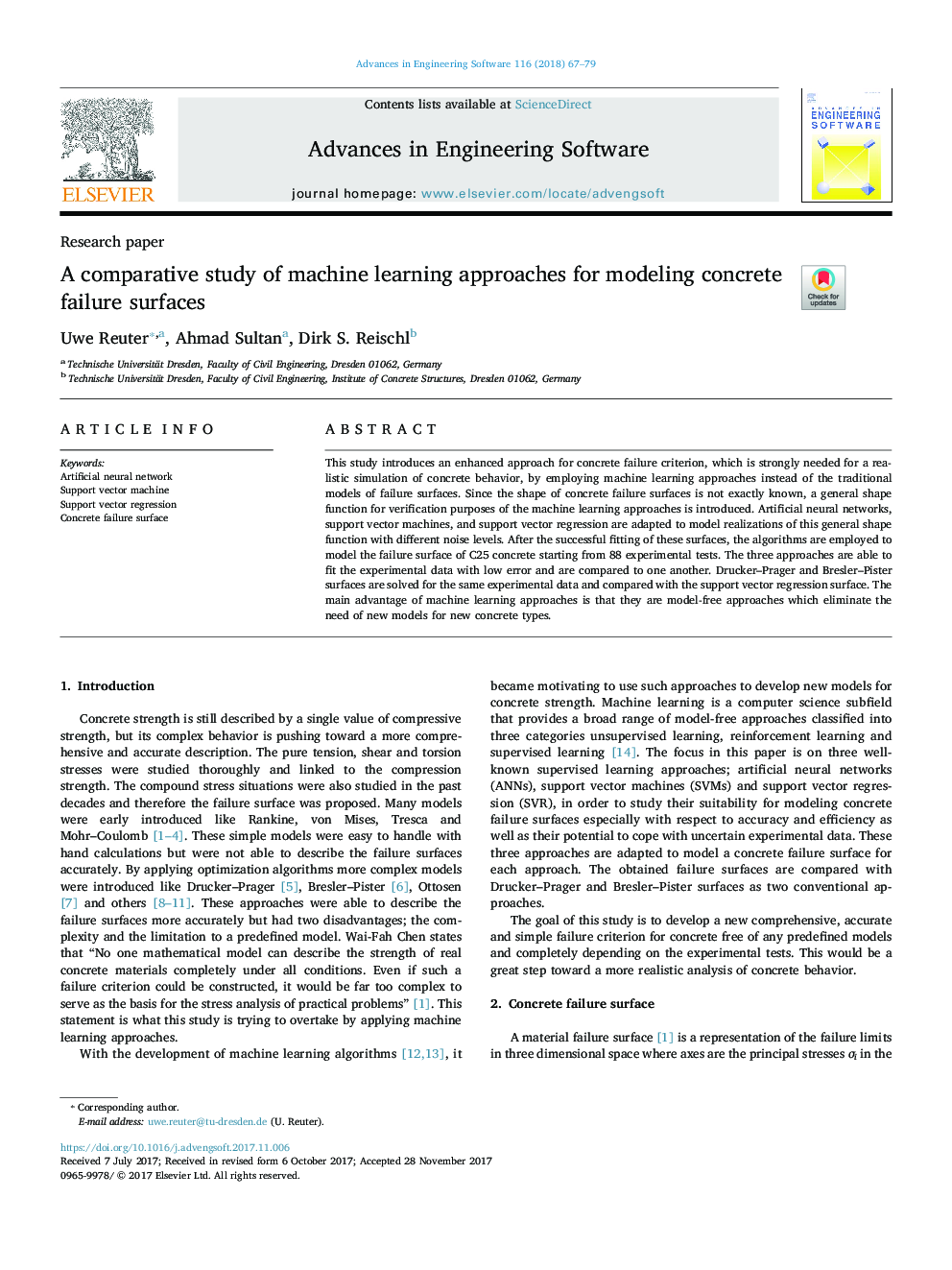| Article ID | Journal | Published Year | Pages | File Type |
|---|---|---|---|---|
| 6961404 | Advances in Engineering Software | 2018 | 13 Pages |
Abstract
This study introduces an enhanced approach for concrete failure criterion, which is strongly needed for a realistic simulation of concrete behavior, by employing machine learning approaches instead of the traditional models of failure surfaces. Since the shape of concrete failure surfaces is not exactly known, a general shape function for verification purposes of the machine learning approaches is introduced. Artificial neural networks, support vector machines, and support vector regression are adapted to model realizations of this general shape function with different noise levels. After the successful fitting of these surfaces, the algorithms are employed to model the failure surface of C25 concrete starting from 88 experimental tests. The three approaches are able to fit the experimental data with low error and are compared to one another. Drucker-Prager and Bresler-Pister surfaces are solved for the same experimental data and compared with the support vector regression surface. The main advantage of machine learning approaches is that they are model-free approaches which eliminate the need of new models for new concrete types.
Related Topics
Physical Sciences and Engineering
Computer Science
Software
Authors
Uwe Reuter, Ahmad Sultan, Dirk S. Reischl,
